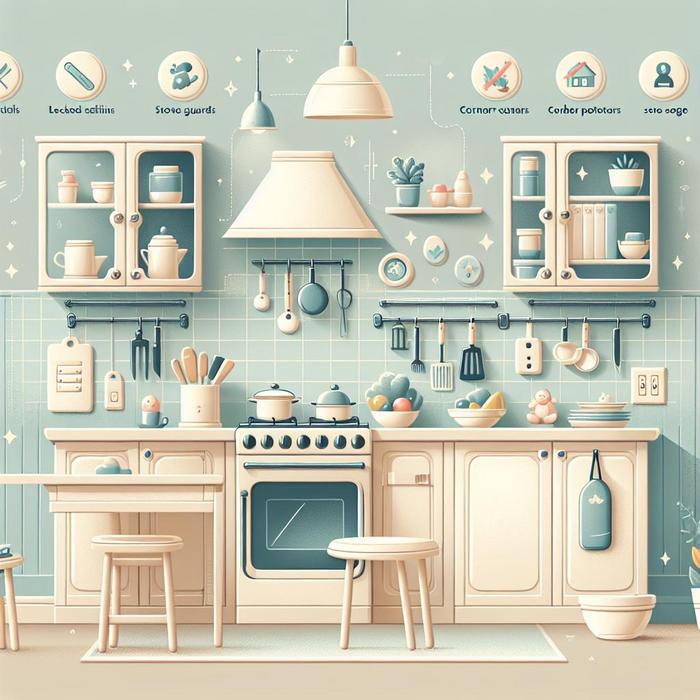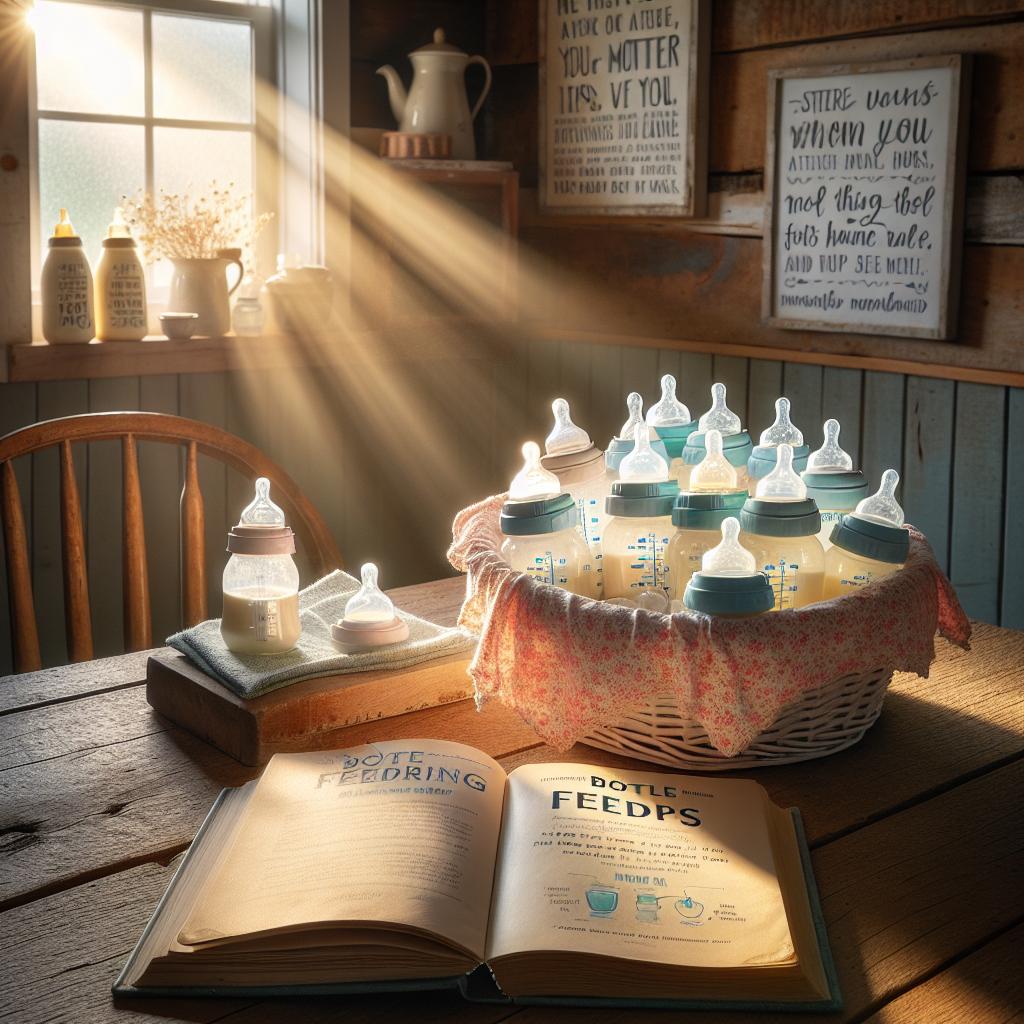Babyproofing the Kitchen: Steps We Took to Ensure Safety
Recognizing the Need for Kitchen Babyproofing
The kitchen is often seen as the heart of the home, a place of warmth, nourishment, and shared experiences. Yet for parents, it can also represent a zone riddled with potential hazards for their curious little ones. The onset of crawling and toddlerhood brings with it myriad opportunities for exploration, but also calls for heightened vigilance. To protect our babies from potential accidents, we realized the importance of creating safe spaces starting with one of the most accident-prone areas— the kitchen.
Our Mission to Prevent Accidents
Once we realized just how many dangers lurked in our kitchen, we made it our mission to prevent any potential accidents. Careful planning, the right tools, and a good deal of vigilance proved essential in this task. Looking back, we are grateful for the peace of mind this journey brought us. We’d like to share these valuable kitchen babyproofing tips with other parents, to help them safeguard their kitchens without compromising on the fun and learning opportunities it can offer.
Creating Safe Spaces: What it Really Takes
Understanding Your Child’s Point of View
The first step in babyproofing the kitchen—or any room, for that matter— is to see it through your child’s eyes. This means getting down on all fours and exploring the space from your child’s level. You’d be surprised at the hazards you could detect from this vantage point, hazards that you’d likely miss standing up.
Securing Cabinets and Drawers
One of the first things we did was to secure all lower cabinets and drawers. We found magnetic locks to be particularly effective. These locks are invisible from the outside, maintaining the aesthetics of your kitchen, while preventing your child from accessing potentially dangerous items inside. You can learn more about this and other childproofing essentials from National Safety Council and Pampers.
Secure Appliances and Electrical Outlets
Many kitchens are filled with appliances that pose significant risks to children. Whether it’s a refrigerator, oven, or blender, it’s critical to ensure these devices are either out of reach or appropriately secured. Similarly, make sure all electrical outlets are covered when not in use.
Creating a Safe Zone
It’s also useful to set aside a “safe zone” in your kitchen where your child can play and explore without coming into contact with potential hazards. This space should be away from hot surfaces, sharp objects, and breakable items. More tips on how to set up a safe zone can be found on TheBabyLodge.
Seeking Professional Guidance: An Investment Worth Considering
While there is lots you can do on your own, seeking professional advice or services can be an investment worth considering, especially when it comes to the safety of your child. Experts can help you identify less obvious hazards and provide practical solutions. They can also conduct a thorough safety assessment of your kitchen, which can be invaluable in ensuring your peace of mind. At Feed-Guide, we share more insights on keeping your baby safe in the home.
The Steps We Took to Babyproof the Kitchen
We went through several key steps in our kitchen babyproofing process. Let’s share some of these steps in detail:
- Locks Everywhere: From refrigerators to ovens, we installed locks on all significant appliances. You can find child safety locks at most home improvement stores or online.
- Secure Small Appliances: We moved all small appliances, such as toasters and coffee machines, out of reach. Items like these can quickly heat up or have parts small enough for a child to choke on.
- Magnetic Locks on Cabinets: After a comprehensive search for the best childproofing tools, we decided on magnetic locks for our cabinets. They are efficient, economical, and also hidden from view, maintaining the aesthetics of the kitchen. For further guidance on how to babyproof cabinets, you can refer to this comprehensive guide by Parents.com.
- Covering Electrical Outlets: Outlet covers are a must in any room where a child spends time, especially in the kitchen. We ensured that all outlets, whether used or unused, are safely covered.
- Secure Furniture: All our furniture is secured to prevent tipping. We made sure our freestanding kitchen units, such as islands or shelves, are properly fixed. We also anchored heavy items like the microwave, so they can’t be accidentally knocked off.
- Create a Safe Zone: As previously mentioned, creating a safe zone is critical. This is a designated space where your little one can safely play and explore without any fear. Remember, this spot should be free from sharp objects, hot surfaces, and fragile items. More tips on safe zones can be found on Whattoexpect.com.
Finding the Right Tools for Babyproofing
Finding the right tools proved pivotal in our quest for a baby-safe kitchen. For instance, the magnetic locks we used on cabinets offer a seamless, secure solution without compromising our kitchen’s aesthetics. We also found corner protectors a helpful aid to soften sharp edges on benches and cupboards. Plastic stove-guard was another addition that prevented little hands from landing on the hot stove or pulling pots and pans.
We also utilized adhesive childproofing pads that can keep doors from fully closing and can help prevent injuries caused by sudden door-closings. Discover a comprehensive list of babyproofing products and resources here.
Ongoing Vigilance: The Key to Continued Safety
The process of babyproofing the kitchen doesn’t necessarily end with the installation of locks and relocating appliances. It is an ongoing responsibility that requires constant vigilance. Always be aware of what your child is doing and where they are in the kitchen, especially when cooking or when others are in the space.
Moreover, as your child grows, reassess the kitchen regularly. A safety measure that worked when your child was a year old may not work when they are two or three. Keeping your baby safe is a process, not a one-time project. Babyproofing takes time, patience, and flexibility, so don’t be discouraged if the changes you make aren’t perfect at first. You can always adjust and adapt as you go.
Motherhood is a journey. It can be daunting and exhausting but is ultimately rewarding in every sense. For us, babyproofing the kitchen was just the first step in ensuring our child’s safety. It was a rollercoaster ride with bundles of worry, a handful of trial and error, and a pinch of laughter.
We hope that sharing our experience will provide guidance and assurance to other parents who are embarking on their childproofing journey. Here’s to a safe and happy parenting journey!






